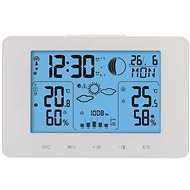A Holter monitor is small battery-operated device about the size of a small camera. What does a holter monitor diagnose? What to expect from a holter monitor? Is Holter monitor a stress test?
Why would I need a holter monitor test? Your doctor may want you to wear a Holter monitor for one to two days. During that time, the device records all of your heartbeats. Holter monitoring gives your doctor a constant reading of your heart rate and rhythm over a 24-hour period (or longer).
How the Test is Performed Electrodes (small conducting patches) are stuck onto your chest. A Holter Monitor is a small portable device used for heart disease testing and for the assessment and diagnosis of chest pain. The American Heart Association explains what a Holter Monitor is and its uses.

ECG Holter monitor tests can be done for varying lengths of time. The tests can last for 2 or hours, or five to seven days. The Holter monitor can be worn throughout normal daily activities. Holter ECG monitoring is a continuous test to record your heart’s rate and rhythm for hours. This device has electrodes and electrical leads exactly like a regular ECG, but it has fewer leads.
This system of compact recorders and Holter software can scale up or down to meet your needs. The monitor is a small battery-operated device that you wear. It will show how fast your heart beats and if it beats in a regular pattern.

If your doctor diagnoses you with irregular cardiac symptoms, they may prescribe a Holter monitor for you to wear. This fairly common device helps monitor the electrical activity in your heart. It will give your doctor a good understanding about how your heart acts on a daily basis. The device is small and light-weight and hangs around your neck connecting cable to sensors attached to your chest.
How do I prepare for the test? It is named for Norman J. There is no special preparation required. Spacelabs Cardiology can trace its origins to the very beginning of Holter technology in Del Mar Reynolds, the inventors of Holter technology over half a century ago. Supraventricular Ectopic Beat (SVE) A beat that is premature, narrow in width but may be slightly different shaped than the patient’s “normal” beats. These beats may be sinus, atrial, or nodal in origin.
Characteristics include: P wave if sinus or atrial origin, no P wave if nodal origin, or changes in the P wave such as: inverte notche. Ambulatory means walking or. Holter monitors are tools of proven efficacy in diagnosing and monitoring cardiac arrhythmias.
Despite the fact their use is widely prescribed by general practitioners, little is known about their evolving role in the management of patients with cryptogenic stroke, paroxysmal atrial fibrillation, unexplained recurrent syncope and risk stratification in implantable cardioverter defibrillator or pacemaker candidates. The advent of small, lightweight yet robust digital recorders now enables us to offer this to dogs and even cats too. It will take approximately minutes to hook up the recorder and give you instructions. The patient should keep a diary of their activities and symptoms during this period.
It continuously records ECG from two or three leads using electrodes on the skin for hours, hours, or up to two weeks with newer devices. ECG-Patch is a wearable, waterproof, reusable, rechargeable ECG monitor that is used with a disposable waterproof single use “patch” electrode. Being reusable, it is environmentally friendly and has lower operating costs. A replaceable electrode patch means full disclosure monitoring of hrs to days is catered for.
Lifecard CF Digital Holter Monitor Spacelabs leverages more than years of Holter Monitoring experience to ensure the highest quality, most accurate ambulatory ECG information.
Nincsenek megjegyzések:
Megjegyzés küldése
Megjegyzés: Megjegyzéseket csak a blog tagjai írhatnak a blogba.